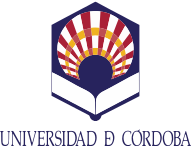Modeling Sugar Beet Responses to Irrigation with AquaCrop for Optimizing Water Allocation
Water 2019, 11(9), 1918; https://doi.org/10.3390/w11091918
Partner Publication (University of Cordoba):
1 Agronomy Department, University of Cordoba, 14007 Córdoba, Spain
2 Research Association for Sugar Beet Crop Improvement, 47012 Valladolid, Spain
3 Institute for Sustainable Agriculture, CSIC, 14004 Córdoba, Spain
Abstract:
Process-based crop models such as AquaCrop are useful for a variety of applications but must be accurately calibrated and validated. Sugar beet is an important crop that is grown in regions under water scarcity. The discrepancies and uncertainty in past published calibrations, together with important modifications in the program, deemed it necessary to conduct a study aimed at the calibration of AquaCrop (version 6.1) using the results of a single deficit irrigation experiment. The model was validated with additional data from eight farms differing in location, years, varieties, sowing dates, and irrigation. The overall performance of AquaCrop for simulating canopy cover, biomass, and final yield was accurate (RMSE = 11.39%, 2.10 t ha−1, and 0.85 t ha−1, respectively). Once the model was properly calibrated and validated, a scenario analysis was carried out to assess the crop response in terms of yield and water productivity to different irrigation water allocations in the two main production areas of sugar beet in Spain (spring and autumn sowing). The results highlighted the potential of the model by showing the important impact of irrigation water allocation and sowing time on sugar beet production and its irrigation water productivity.


0 comments